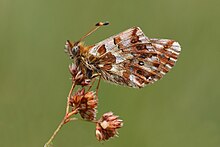.mw-parser-output .hidden-begin{box-sizing:border-box;width:100%;padding:5px;border:none;font-size:95%}.mw-parser-output .hidden-title{font-weight:bold;line-height:1.6;text-align:left}.mw-parser-output .hidden-content{text-align:left}@media all and (max-width:500px){.mw-parser-output .hidden-begin{width:auto!important;clear:none!important;float:none!important))You can help expand this article with text translated from the corresponding article in French. (August 2018) Click [show] for important translation instructions.
View a machine-translated version of the French article.
Machine translation, like DeepL or Google Translate, is a useful starting point for translations, but translators must revise errors as necessary and confirm that the translation is accurate, rather than simply copy-pasting machine-translated text into the English Wikipedia.
Do not translate text that appears unreliable or low-quality. If possible, verify the text with references provided in the foreign-language article.
You must provide copyright attribution in the edit summary accompanying your translation by providing an interlanguage link to the source of your translation. A model attribution edit summary is Content in this edit is translated from the existing French Wikipedia article at [[:fr:Nacré des Balkans]]; see its history for attribution.
You may also add the template ((Translated|fr|Nacré des Balkans)) to the talk page.
For more guidance, see Wikipedia:Translation.
| Balkan fritillary | |
|---|---|

| |

| |
| both at Yastrebets, Rila Mountains, Bulgaria | |
| Scientific classification | |
| Domain: | Eukaryota |
| Kingdom: | Animalia |
| Phylum: | Arthropoda |
| Class: | Insecta |
| Order: | Lepidoptera |
| Family: | Nymphalidae |
| Genus: | Boloria |
| Species: | B. graeca
|
| Binomial name | |
| Boloria graeca (Staudinger, 1870)
| |
| Synonyms | |
|
Boloria (Boloria) graeca | |
The Balkan fritillary (Boloria Mesa Graeca) is a butterfly in the family Nymphalidae found in the southern Central Alps and the mid- to high-altitude Balkans.[1] The larva feeds on Viola species.
The orange upperside of the wings has a brown basal suffusion adorned with various marks of brown color, submarginal round spots and lines forming festoons. The hindwing forms an angle at its anterior edge. The underside of the forewings is identical, that of the hindwings presents silver designs, a line of small circles and greenish marbling in the female.[2]

